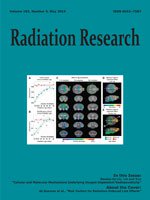Advancements made over the past decades in both molecular imaging and radiotherapy planning and delivery have enabled studies that explore the efficacy of heterogeneous radiation treatment (“dose painting”) of solid cancers based on biological information provided by different imaging modalities. In addition to clinical trials, preclinical studies may help contribute to identifying promising dose painting strategies. The goal of this current study was twofold: to develop a reproducible positioning and set-up verification protocol for a rat tumor model to be imaged and treated on a clinical platform, and to assess the dosimetric accuracy of dose planning and delivery for both uniform and positron emission tomography-computed tomography (PET-CT) based heterogeneous dose distributions. We employed a syngeneic rat rhabdomyosarcoma model, which was irradiated by volumetric modulated arc therapy (VMAT) with uniform or heterogeneous 6 MV photon dose distributions. Mean dose to the gross tumor volume (GTV) as a whole was kept at 12 Gy for all treatment arms. For the nonuniform plans, the dose was redistributed to treat the 30% of the GTV representing the biological target volume (BTV) with a dose 40% higher than the rest of the GTV (GTV – BTV) (~15 Gy was delivered to the BTV vs. ~10.7 Gy was delivered to the GTV – BTV). Cone beam computed tomography (CBCT) images acquired for each rat prior to irradiation were used to correctly reposition the tumor and calculate the delivered 3D dose. Film quality assurance was performed using a water-equivalent rat phantom. A comparison between CT or CBCT doses and film measurements resulted in passing rates >98% with a gamma criterion of 3%/2 mm using 2D dose images. Moreover, between the CT and CBCT calculated doses for both uniform and heterogeneous plans, we observed maximum differences of <2% for mean dose to the tumor and mean dose to the biological target volumes. In conclusion, we have developed a robust method for dose painting in a rat tumor model on a clinical platform, with a high accuracy achieved in the delivery of complex dose distributions. Our work demonstrates the technical feasibility of this approach and enables future investigations on the therapeutic effect of preclinical dose painting strategies using a state-of-the-art clinical platform.
How to translate text using browser tools
21 April 2015
What Level of Accuracy Is Achievable for Preclinical Dose Painting Studies on a Clinical Irradiation Platform?
Daniela Trani,
Brigitte Reniers,
Lucas Persoon,
Mark Podesta,
Georgi Nalbantov,
Ralph T. H. Leijenaar,
Marlies Granzier,
Ala Yaromina,
Ludwig Dubois,
Frank Verhaegen,
Philippe Lambin





